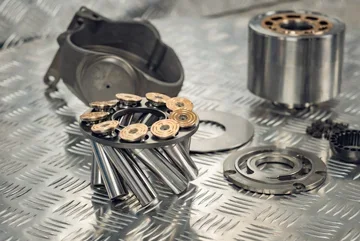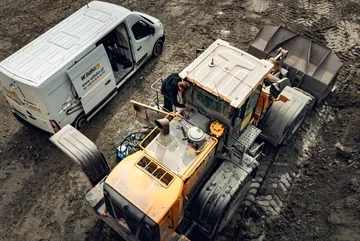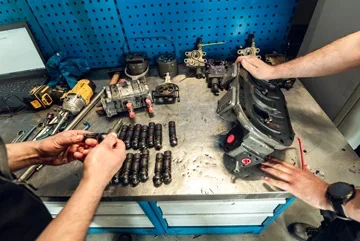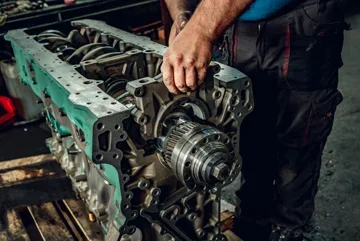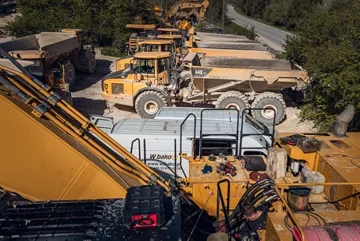Hydraulics in construction machinery can be surprising – especially when dealing with solutions that combine efficiency with compactness.
An example is the Volvo EC 480 excavator, which uses two swing hydraulic motors and two reducers. In theory – reliability and easier servicing. In practice? Let's see how the repair and diagnosis of this system looked.
Customer report: oil leak through the level gauge
The machine arrived at the service with a seemingly simple problem – a hydraulic oil leak through the level gauge in one of the swing reducers. Quick decision: replacement of the damaged motor with a spare, and in the background – a set of seals and disassembly tools. It turned out on site that the damage was more serious: worn bearings, a destroyed distribution plate, a scratched cylinder, and pistons. The motor was not suitable for further operation without comprehensive regeneration.
The second motor under scrutiny – preventive verification
The second motor, although it did not show signs of failure, was removed as a precaution. After disassembly, similar wear was revealed: metal shavings, scratches on the rotating group components, worn pistons and cylinder. The decision? In both cases – replacement of the entire rotating group and swing brake seals.
Why two motors instead of one?
The use of two smaller units makes sense – it reduces the size of components, facilitates assembly and disassembly, and also increases reliability through redundancy. If one large motor failed, its removal would be significantly more difficult.
Assembly stage – precision and experience
After thorough cleaning of the housings and preparing new components, it was time for assembly. The service team assembled the new rotating group, shafts, discs, spacers, springs, and seals step by step. The work concluded with the assembly of both motors according to the technical documentation.
Swing brake – how does it really work?
A common mistake among users is the belief that the swing brake is involved in the active operation of the machine. In reality – it only works when the machine is turned off or the armrest is raised. The brake keeps the machine in place when there is no hydraulic pressure. The smooth stopping is handled by control valves, not the brake itself.
Summary and recommendations
Both the first and second motors required full regeneration. All verification results were recorded in the system and provided to the customer. This is an example that even the absence of a leak does not mean good technical condition.
Trust the specialists – quick verification at no charge!
Wibako offers free verification of hydraulic pumps and motors on the same day they arrive at our service.
The full video can be seen here.













